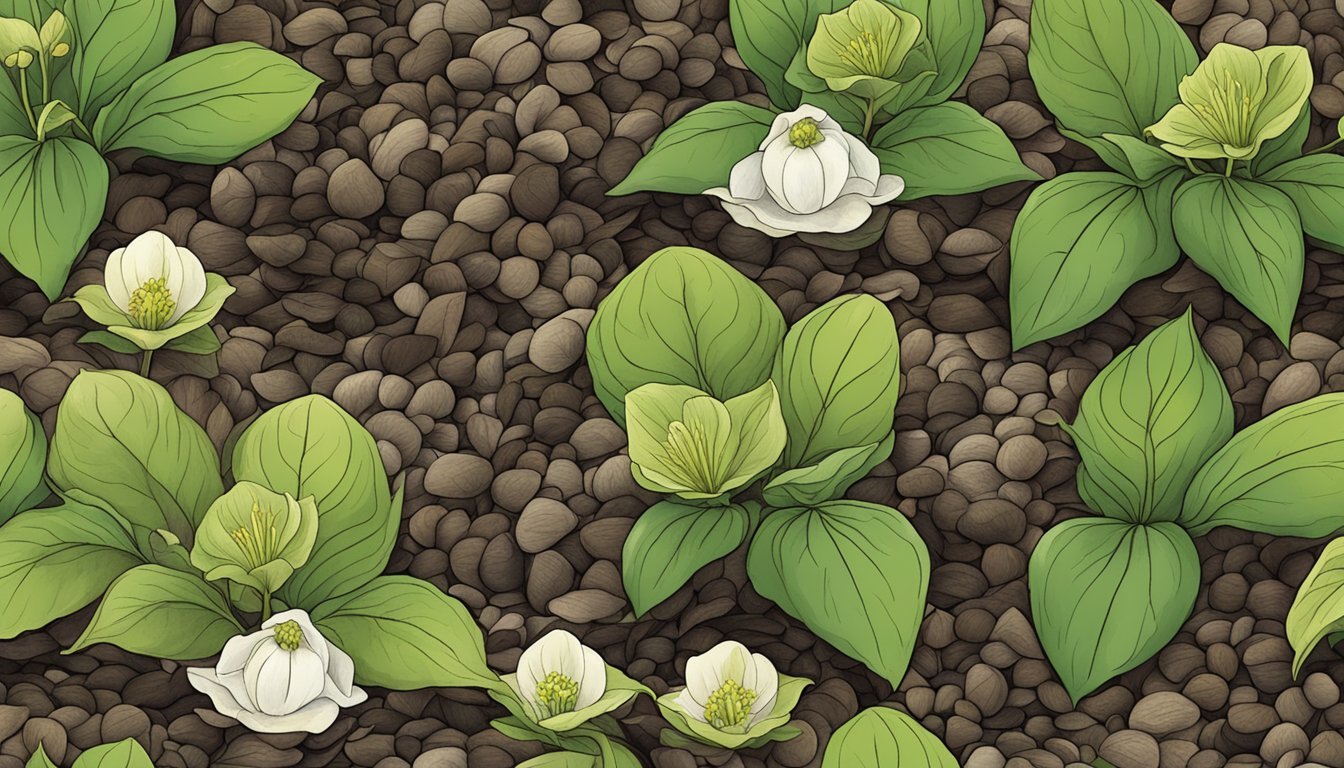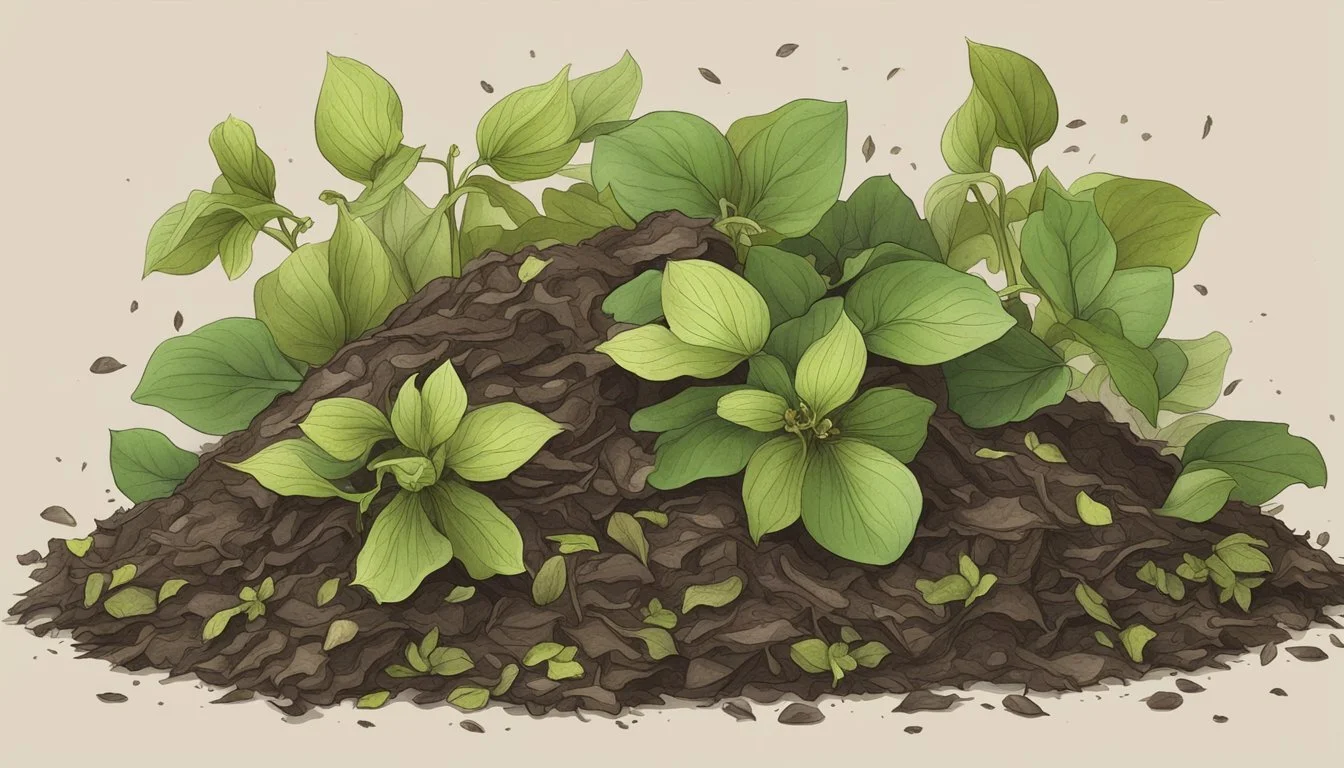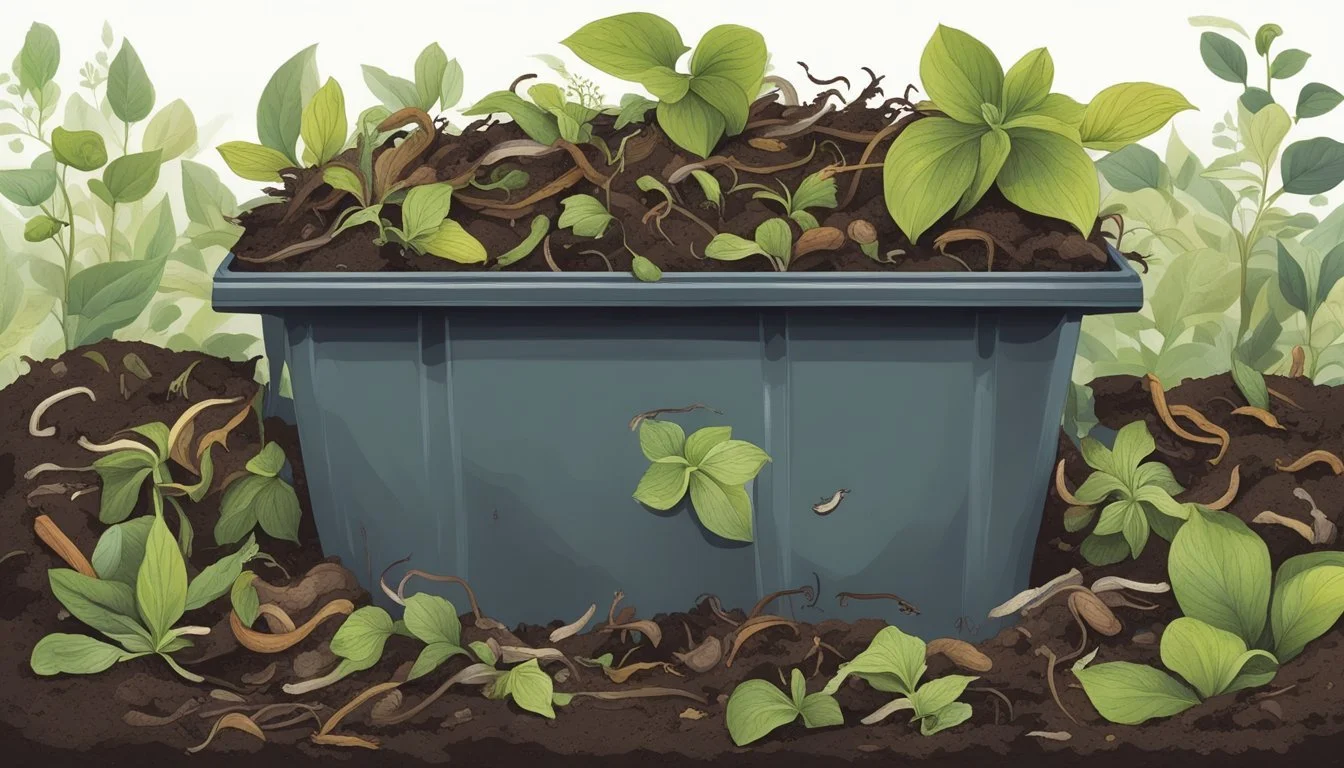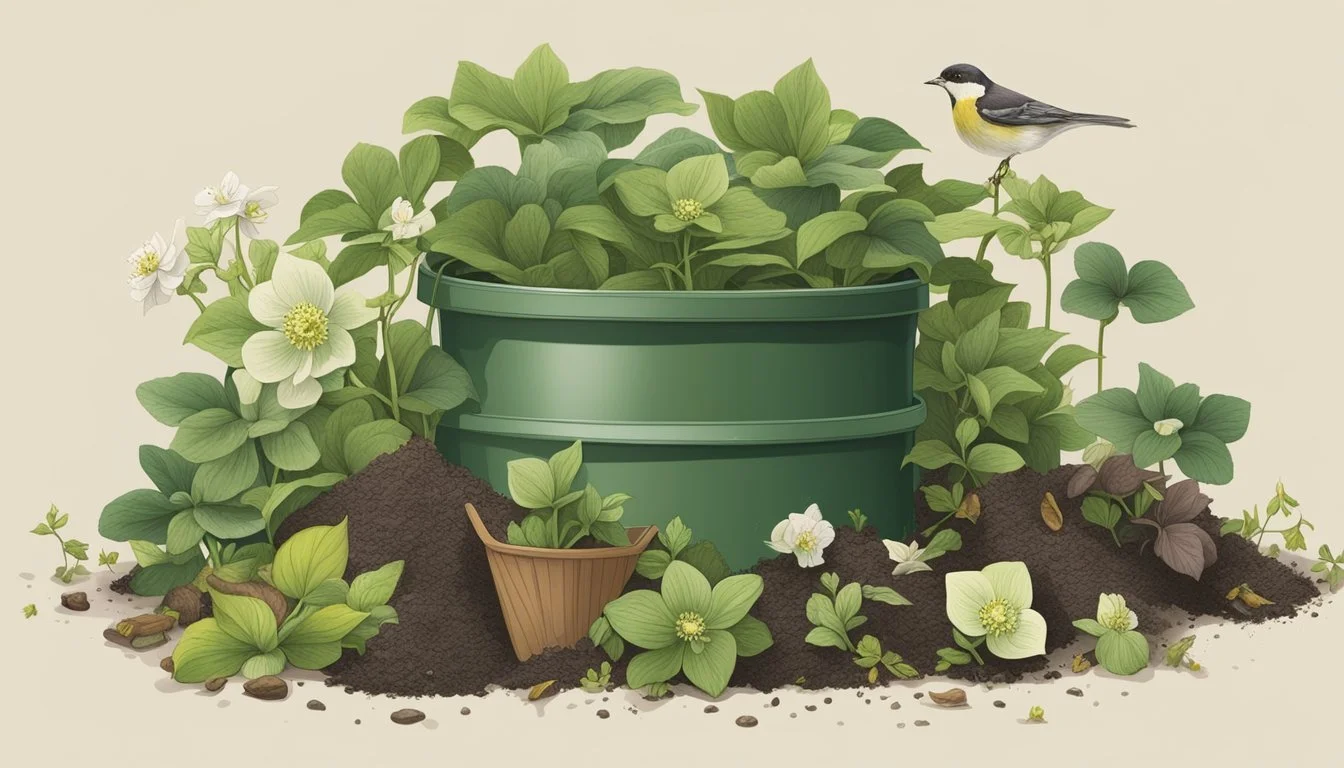Can You Compost Hellebore Leaves?
Understanding Safe Composting Practices
Hellebores, appreciated for their early spring blooms, are a gardener's delight, bringing color to the garden when most plants are still dormant. As with many perennial plants, garden maintenance often involves pruning and the subsequent disposal of plant material. When it comes to hellebore leaves, however, gardeners may hesitate before adding them to the compost pile.
Composting is a widely adopted practice for recycling garden waste back into the soil, providing plants with rich, organic nutrients. While most plant materials are suitable for composting, there can be exceptions based on plant-specific properties. With hellebores, the question arises because their leaves are known to be toxic to humans and animals, potentially contributing harmful substances to compost.
The answer to whether hellebore leaves can be responsibly composted lies in understanding their composition and how they break down in a compost environment. Compost piles rely on microbial activity to decompose organic matter, and the toxicity levels of hellebore leaves must be gauged against the efficiency of this natural recycling process to safeguard the quality of the resulting compost.
Understanding Hellebores
Hellebores, known for their early spring blooms and resilience, are a notable addition to any garden. These perennials offer a range of varieties, each with distinct growth habits and characteristics suitable for varied climates and garden designs.
Botanical Profile
Helleborus, the botanical genus for hellebores, encompasses several species of perennials, some notable ones including:
Helleborus niger: Commonly known as the Christmas rose, prized for its pure white, sometimes pink-tinged blooms.
Helleborus x hybridus: A group of hybrid hellebores, often referred to as Lenten roses, which display a wide variety of colors and patterns.
Helleborus foetidus: Known as the stinking hellebore or bear's foot, it is recognized by its slightly unpleasant scent and pale green, bell-shaped flowers.
Helleborus argutifolius: Commonly called the Corsican hellebore, sporting clusters of light green flowers.
Helleborus orientalis: Known as the oriental hellebore, offering a range of pastel and deep colors in its flowers.
Growth Habits and Characteristics
Helleborus niger and Helleborus x hybridus are popular for their ornamental value and adaptability in the garden. These species are:
Perennials: Ensuring their return each spring.
Evergreen: Providing year-round interest in the garden.
Hardy: Found thriving in a variety of climates.
Their growth characteristics are as follows:
Size: Typically reaching 12-36 inches in height.
Soil Preferences: Prefer rich, well-drained soils with a pH ranging from slightly acidic to neutral or slightly alkaline.
Light Requirements: Thrive in part shade to full shade conditions.
Bloom Time: Heralding the arrival of spring with their flowers.
By understanding these growth habits and the botanical profile, gardeners can ensure a successful integration of hellebores into their landscapes.
Composting Basics
In composting, one enriches the soil by aiding the natural process of organic matter break down to create a rich, nutrient-dense amendment for gardening.
Organic Matter and Decomposition
Organic matter encompasses plant and animal materials that are capable of breaking down, or decomposing, over time. This process is essential for the creation of compost, which is the resulting product of controlled decomposition. Decomposition occurs as microorganisms such as bacteria, fungi, and other decomposers consume this organic matter. In a garden compost setting, ideal decomposition necessitates optimal conditions involving moisture, oxygen, and a balance of 'green' rich-nitrogen materials and 'brown' carbon-rich materials.
Benefits of Composting Garden Waste
Composting garden waste has multiple benefits:
Soil Enhancement: Compost introduces vital nutrients and improves soil structure.
Reduction in Waste: Diverting garden waste from landfills reduces waste and the release of methane, a potent greenhouse gas.
Plant Health: Plants benefit from the increased nutritional content and improved soil aeration resulting from added compost, which can lead to more robust, disease-resistant plants.
Water Retention: Improved soil structure enhances water retention, reducing the need for frequent watering.
By incorporating composting into garden practices, one can significantly improve the quality of one's soil and the health of their garden ecosystem.
The Role of Hellebore Leaves in Composting
When considering hellebore leaves for composting, one should evaluate their suitability for the compost pile and understand potential risks. Hellebores, known for their winter resilience, have specific characteristics that may influence their role in composting.
Compost Suitability
Hellebore leaves are unique in that they are part of an evergreen foliage group, which can take longer to decompose compared to deciduous leaves. This slow degradation is partly due to their tougher structure intended to survive winter conditions. When integrating hellebore leaves into compost, their breakdown rate should be taken into account, as it may slow the overall composting process.
Potential Risks and Considerations
Several considerations arise when adding hellebore leaves to compost. Firstly, hellebores contain toxic compounds that can remain in the compost if not thoroughly broken down. This poses a risk to plants later nourished by this compost and to animals that may come into contact with it.
Disease Consideration: Hellebore leaves are sometimes susceptible to a fungal disease known as leaf spot. This disease can transfer to the compost pile if infected leaves are included.
Toxicity: All parts of the hellebore plant are toxic, which is crucial to remember when handling the leaves or considering them for composting.
It is also worth noting that hellebore prefers alkaline soil, but this does not necessarily impact their contribution to the compost's pH level owing to the small volume they are likely to add to a diverse compost mixture.
Composting Techniques for Hellebore Leaves
When composting hellebore leaves, one must carefully consider the layering of materials and managing the balance of moisture and pH to ensure efficient decomposition without harming your compost's quality.
Layering and Aeration
To compost hellebore leaves, they should be incorporated into the compost pile in layers, interspersed with other organic matter. A proper ratio is essential:
Brown Layers: Use hellebore leaves as 'brown' material, providing carbon.
Green Layers: Add 'green' materials like grass clippings or kitchen waste to supply nitrogen.
Here's a simple layering guideline:
Start with a brown layer of shredded hellebore leaves, ideally 2-3 inches thick.
Add a green layer, maintaining a ratio of 4:1 (brown by volume).
Repeat the layers until the pile reaches a suitable size.
For aeration, turn the pile every 1-2 weeks. Proper aeration ensures oxygen reaches the microorganisms that break down the material. It also helps avoid unpleasant odors and accelerates the decomposition process.
Monitoring Moisture and pH
Moisture and pH levels in the compost pile should be consistently monitored and managed:
Moisture: The pile should be kept moist, like a wrung-out sponge, but not waterlogged. Covering the pile with a tarp can help retain proper moisture.
Status Action Required Too dry Lightly water the layers. Too wet Add more brown materials/mulch.
pH: Hellebore leaves can be slightly alkaline. Use a pH meter to monitor the pile's acidity—optimal pH should be between 6 and 7.5.
pH Level Adjustment Below 6 Add lime to increase pH. Above 7.5 Incorporate more green material or coffee grounds.
Maintaining these levels ensures that microorganisms thrive and efficiently break down the leaves into nutrient-rich compost.
Improving Soil Health with Hellebore Compost
Composting with hellebore leaves can enhance soil fertility and texture, providing essential nutrients for various planting scenarios while promoting a sustainable gardening practice.
Nutrient Content and Soil Structure
Hellebore leaves, when decomposed, add valuable organic matter to the compost mix. This organic matter is rich in nitrogen, an essential element that supports the growth and greenery of plants.
Nitrogen Content: Hellebore leaves contribute to the nitrogen levels of the compost, which is crucial for leafy plant growth.
Soil Structure Improvement: The addition of composted material improves soil aeration and drainage, particularly beneficial for creating well-drained soil environments.
Application and Timing
Application of hellebore leaf compost should be timed to coincide with planting schedules or when existing plants will benefit the most, typically in the early spring or fall.
Before Planting: Mixing compost into the topsoil can prepare planting beds, offering a nutrient-rich environment for new plants.
Established Plants: For existing garden areas, applying compost around the base of the plants can provide a slow-release fertilizer effect.
By integrating the compost at these key times, gardeners ensure that plants have access to nutrients when they most require them for growth and development.
Integrating Composted Hellebores in Your Garden
When incorporating composted hellebore leaves into the garden, one must consider their benefits in companion planting and as mulch or top dressing. Correct application enriches the soil and supports the growth of compatible plants.
Companion Planting
Composted hellebore leaves are beneficial when introduced to a garden that features a variety of shrubs and ferns. These plants often favor the same shaded conditions that hellebores thrive in. By adding composted hellebore material around these companions, one provides a boost of organic matter, which can improve soil structure and fertility.
Shrubs: Enhance the growth of neighboring shrubs by providing a slow release of nutrients as the composted leaves break down.
Ferns: Create a natural, forest-like environment for ferns, who benefit from the rich, organic material that mimics the forest floor.
Mulching and Top Dressing
Applying composted hellebore leaves as mulch or top dressing contributes to a healthy spring garden. The compost serves multiple purposes: it conserves moisture, suppresses weeds, and gradually releases nutrients into the soil.
Mulching: Spread a layer around plants to maintain soil temperature and moisture, which is particularly important during the growth period in spring.
Top Dressing: Distribute a thin layer of composted material over the soil to improve its quality over time without disturbing the existing plant roots.
Using composted hellebores in these ways not only recycles waste but also promotes a thriving garden ecosystem.
Environmental Benefits and Best Practices
Composting hellebore leaves can have a positive impact on the environment and contribute to sustainable gardening practices. The process not only recycles plant material but also supports local wildlife and promotes a healthier garden ecosystem.
Wildlife Support through Composting
Composting hellebore leaves creates a nutrient-rich soil amendment that benefits garden plants, including those in the buttercup family to which hellebores belong. The improved soil conditions can lead to an increase in nectar production, which is essential for pollinators such as bees and butterflies. These insects rely on nectar as a primary food source, and by enhancing nectar availability, composting indirectly supports the health and diversity of local pollinator populations.
Sustainable Composting Methods
When composting hellebore leaves, it's crucial to employ methods that prevent the spread of pests and diseases, as hellebores can be susceptible to issues such as hellebore leaf spot. The table below outlines best practices for sustainable composting:
Practice Description Layering Alternate green (nitrogen-rich) and brown (carbon-rich) materials in the compost pile to balance nutrients and encourage decomposition. Moisture Management Keep the pile moist but not waterlogged to maintain the necessary conditions for microorganisms to thrive. Regular Turning Turn the pile every few weeks to introduce oxygen, which is critical for breaking down organic matter. Pest and Disease Control Inspect leaves for signs of disease or pests, such as aphids and slugs, and remove any affected material to prevent contamination of the compost. Maturity Monitoring Ensure compost is fully matured before application to avoid introducing pathogens into the garden soil.
By following these sustainable composting methods, gardeners can reduce waste, enhance soil health, and contribute to a more environmentally friendly garden.
Troubleshooting and Maintenance
When composting hellebore leaves, gardeners often encounter specific issues due to the plant's unique characteristics. Effective maintenance strategies can mitigate these troubles and enhance compost quality.
Common Issues with Composting Hellebores
Resistance to Decomposition: Hellebore leaves are notoriously difficult to compost because of their spiky texture and woody stems. These leaves stubbornly resist breaking down, which can lead to an unpleasant compost texture.
Solutions:
Chopping: Smaller pieces decompose more quickly, so cutting the leaves into smaller segments can aid the process.
Mixing: Balance the compost with a mix of green (nitrogen-rich) and brown (carbon-rich) materials to encourage microbial activity.
Disease Transfer: If hellebore leaves are diseased, particularly from fungal infections like black spot or rot caused by the Phytophthora fungus, the pathogens can survive in compost and infect subsequent plants that use the compost.
Solutions:
Identification: Regularly inspect leaves for signs of disease before adding them to the compost.
Disposal: Affected leaves should be disposed of through burning or in the garbage, not in the compost bin.
Maintaining a Healthy Compost
Aeration: To ensure that compost breaks down efficiently, it must be turned regularly to maintain proper aeration. This prevents the compost from compacting and becoming waterlogged, which can create conditions favorable to the Phytophthora fungus.
Techniques:
Turn the compost pile every few weeks with a pitchfork or compost aerator tool.
Introduce dry materials like straw or shredded paper to absorb excess moisture.
Monitoring Moisture Levels: Hellebores, while drought-resistant when established, can contribute to increased moisture in the compost if they are not balanced with drier, brown materials. Maintaining the right moisture balance is crucial for healthy compost.
Strategies:
Balance compost moisture by adding brown materials whenever the compost feels too wet.
Cover the compost during heavy rain to prevent excessive wetness.
Conclusion
Hellebores are valued for their early spring blooms and contribute to sustainable gardening practices with their low maintenance needs. Yet, when it comes to the leaves of the hellebore, gardeners generally advise against adding them to compost. This recommendation is rooted in the potential for hellebore leaves to carry harmful pathogens or self-seed, which could lead to unwanted propagation in garden beds.
For those passionate about maintaining a sustainable garden, it's important to consider alternative disposal methods for hellebore leaves. One common method is to create a separate pile destined for burning or to dispose of them with yard waste, if local regulations allow.
In terms of hellebore care, these plants demand minimal intervention. They should receive occasional water in dry conditions, and thrive with a semi-annual organic feed, particularly in poor soils. Post-flowering, a tidy-up can promote health and vigor.
Here is a succinct list of action items for gardeners managing hellebore waste:
Do not compost hellebore leaves to avoid disease spread and self-seeding.
Dispose responsibly through burning or as per local yard waste guidelines.
Maintain hellebores with periodic watering and feeding for optimal plant health.
Through these practices, gardeners can enjoy the beauty of hellebores while adhering to principles of sustainability and responsible plant care.









